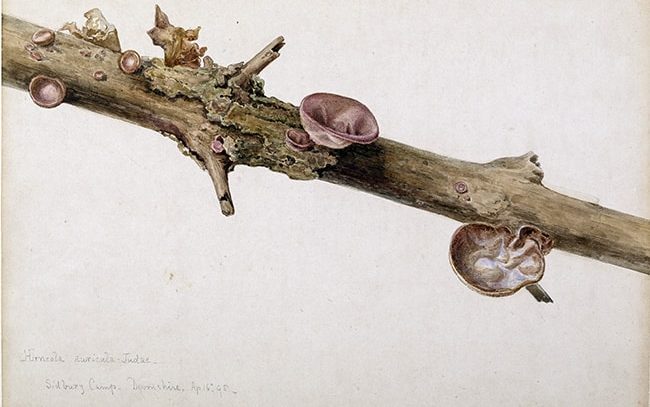Nature writing, it seems, is more popular than ever. Books about getting back to the natural world, from which technology and modern urban living have estranged us, have dominated the non-fiction bestseller charts for the last couple of years, elevating writers such as Robert Macfarlane and Cheryl Strayed to near-celebrity status. Criticisms of the authenticity and motivation behind writing about nature has long been a part of its reception: John Clare accused Keats of an urban sentimentality towards the countryside, which caused him to portray “nature as she … appeared in his fancys & not as he would have described her if he had witnessed the things he describes”. The recent profusion and success of ‘new nature writing’ has similarly caused some to question its effectiveness in inspiring positive social and political change in attitudes towards the environment, fearing instead that it has the potential to be merely a form of “bourgeois escapism”.
Whatever their reception, contemporary nature writers inherit a formidable literary tradition which includes Gilbert White, Ralph Waldo Emerson, Henry David Thoreau and the Romantic poets, whose audacious project was to write not of man’s relationship to man, but man’s relationship to the ground on which he stood. Not all nature writing is conservationist writing, of course. However, a more thoughtful relationship with the natural world, such as that which might be inspired by literature, does tend to lead to a more thoughtful attitude towards how human activity may negatively impact the non-human world. The writers in this list are those whose conservationist sentiments are not only evident in the pages of their books but often went beyond them, and who have helped to shape the face of modern environmentalism.

Beatrix Potter, Deluxe Editions (London: Frederick Warne & Co., 1902) – SOLD
Few writers can be credited with having more directly shaped a landscape than Beatrix Potter. Not only do her “little books” continue to inspire generations of children to curiosity about nature through her anthropomorphic animal characters, but Potter dedicated the fortune she made from their success to conserving the little clutch of Cumbrian hills and valleys she came to call home.
Potter was a woman of many interests: natural history, mycology, botany, archaeology, fossils and farming all fascinated her. Since her childhood holidays in the Lake District and Scotland she recorded what found in watercolours and sketches. Her studies of mushrooms eventually numbered over 250, and in 1897 she presented a paper entitled ‘On the Germination of the Spores of Agaricineae‘ to the Linnean Society. (There is a common misconception that this paper was rejected by the society. In fact, it was read on her behalf in April of that year, Potter being prohibited from attending the meeting in person because she was a woman).
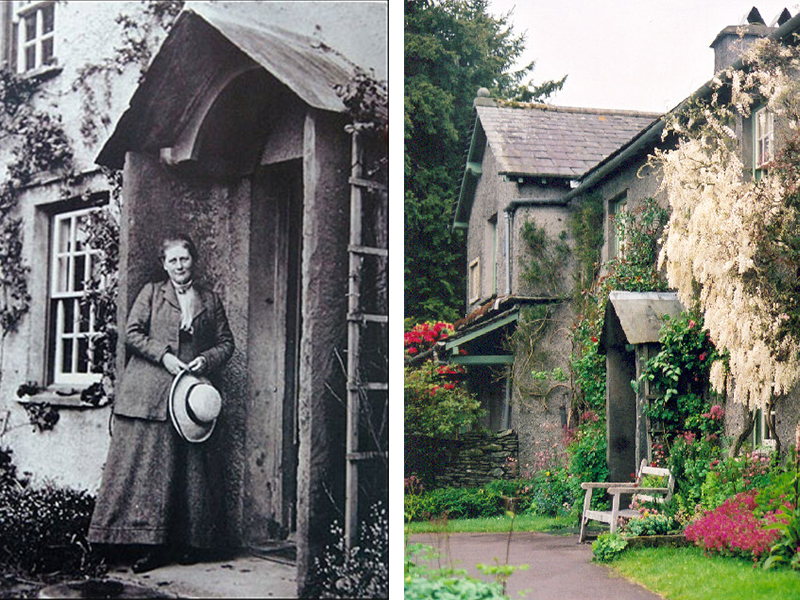
Beatrix Potter by Charles G.Y. King (1854-1937)
Hill Top Farm, Near Sawrey, Cumbria by Marion Dutcher
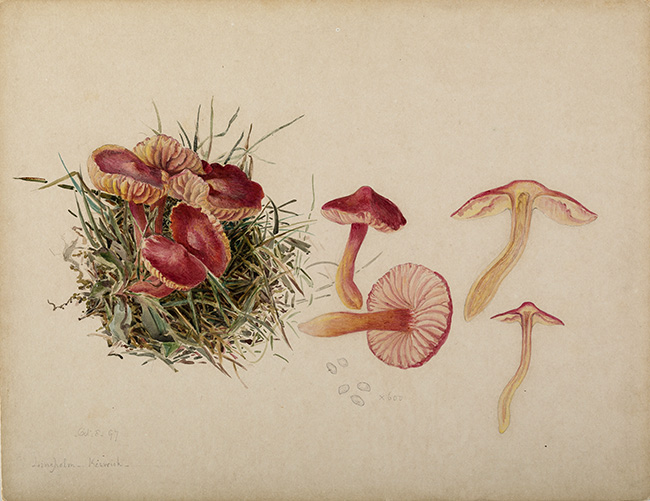
Hirneola Auricula-Judae by Beatrix Potter, 1898. Courtesy of the Armitt Trust, The Armitt Museum and Library, Ambleside.
Canon Hardwicke Rawnsley, the first secretary and founding member of the National Trust, was Potter’s long-time friend and mentor. She shared his views on the conservation of landscapes and the protection of traditional Lakeland crafts and farming methods. She and her husband, William Heelis, became partners with the Trust in buying up farmland, forest and fell to safeguard them from developers. Potter was a shrewd business woman, often using her contacts and influence to acquire land before its sale was made public, which earned her a certain amount of criticism. Her legacy, however, has been instrumental in the formation of the modern-day Lake District National Park. The 4,000 acres of land in her possession on her death left to the National Trust, along with several farms, cottages and all her sheep and cattle.
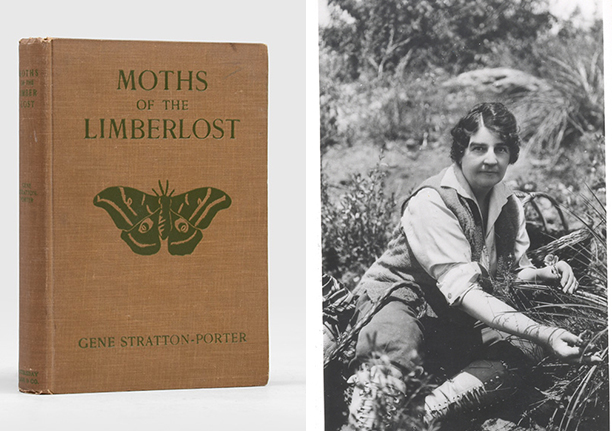
Gene Stratton-Porter, photographed in the boots and breeches that so scandalised her neighbours
Gene Stratton Porter, Moths of the Limberlost (Garden City, New York Doubleday, Page & Company, 1916) – SOLD
Another writer of fiction firmly linked to the landscape she helped to protect, Stratton-Porter is best known for her novel A Girl of the Limberlost. Like Potter, Stratton-Porter was also a keen naturalist, specialising in the birds and moths of Limberlost Swamp which she called home for several years. She also became an early wildlife photographer, to better document the ecosystems of the swamp.
The popularity of Stratton-Porter’s novels brought financial success and notoriety and, like Potter, she used her fortune and position to emphasize her conservationist views, contributing articles and photography to wildlife magazines and publishing numerous books on natural history. She was destined, however, to witness the gradual ecological destruction of her beloved swamp by encroaching industry and agriculture, and the eventual draining of the swampland in 1912. Saddened by the destruction of the swamp’s natural habitats, Stratton-Porter and her family moved away. However, she journeyed the surrounding Indiana swamps extensively, collecting samples of wildflowers to preserve before they were destroyed by development, and it is her work that has ensured the endurance of many of these wildflower types. She also lent her support to the group which opposed the draining of the Mississippi Bottom lands for use a farm land, writing to President Coolidge to express the futility of the project from a scientific point of view.
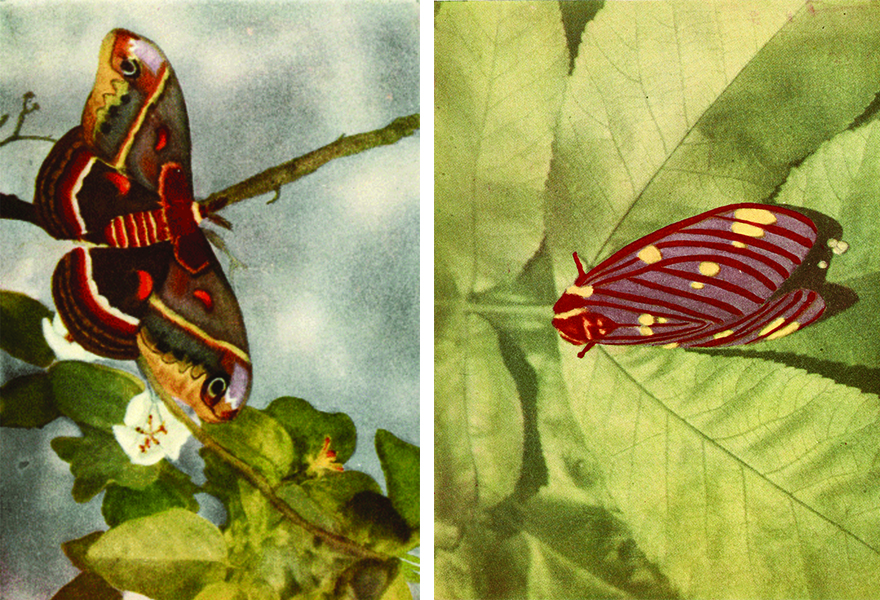
Images from Moths of the Limberlost
Stratton-Porter did not live to see the restoration of the Limberlost Swamp which allowed water back onto the land and replanted many native trees and shrubs in 1997.
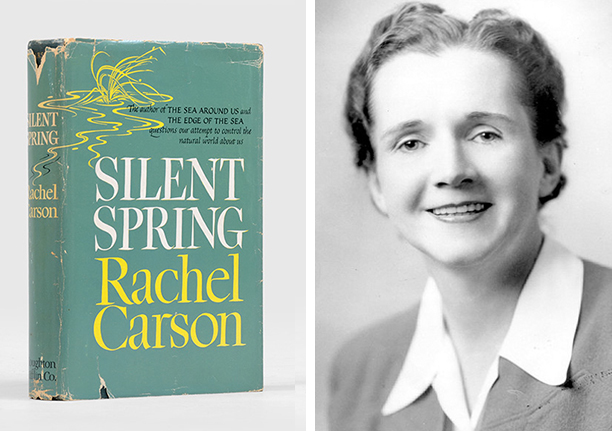
Rachel Carson, official photo as FWS employee. c. 1940.
Rachel Carson, Silent Spring, (Boston: Houghton Mifflin Company, 1962)
Rachel Carson is perhaps one of the most influential figures in modern-day environmentalism. Silent Spring, her treatise of the harmful results of the use of synthetic pesticides, spurred a revolution in American policy on their use and led to a nationwide ban of DDTs and ultimately to the creation of the U.S. Environmental Protection Agency.
Carson first became aware on the negative impact humans could have on plant and animal life through her work as a marine biologist. Her books on the sea, The Sea Around Us (1951) and The Edge of the Sea (1955) we internationally successful, raising awareness about the environmental challenges which threated marine habitats. By the time she came to write Silent Spring, most of the facts about the impact of chemical pesticides we well-known amongst scientific communities, but Carson’s project was to bring these facts to the attention of the general public. The book didn’t only set out the case against the use of certain chemicals, however, but questioned the fundamental human assumption of mastery over nature, sparking a wave of grassroots environmentalism.
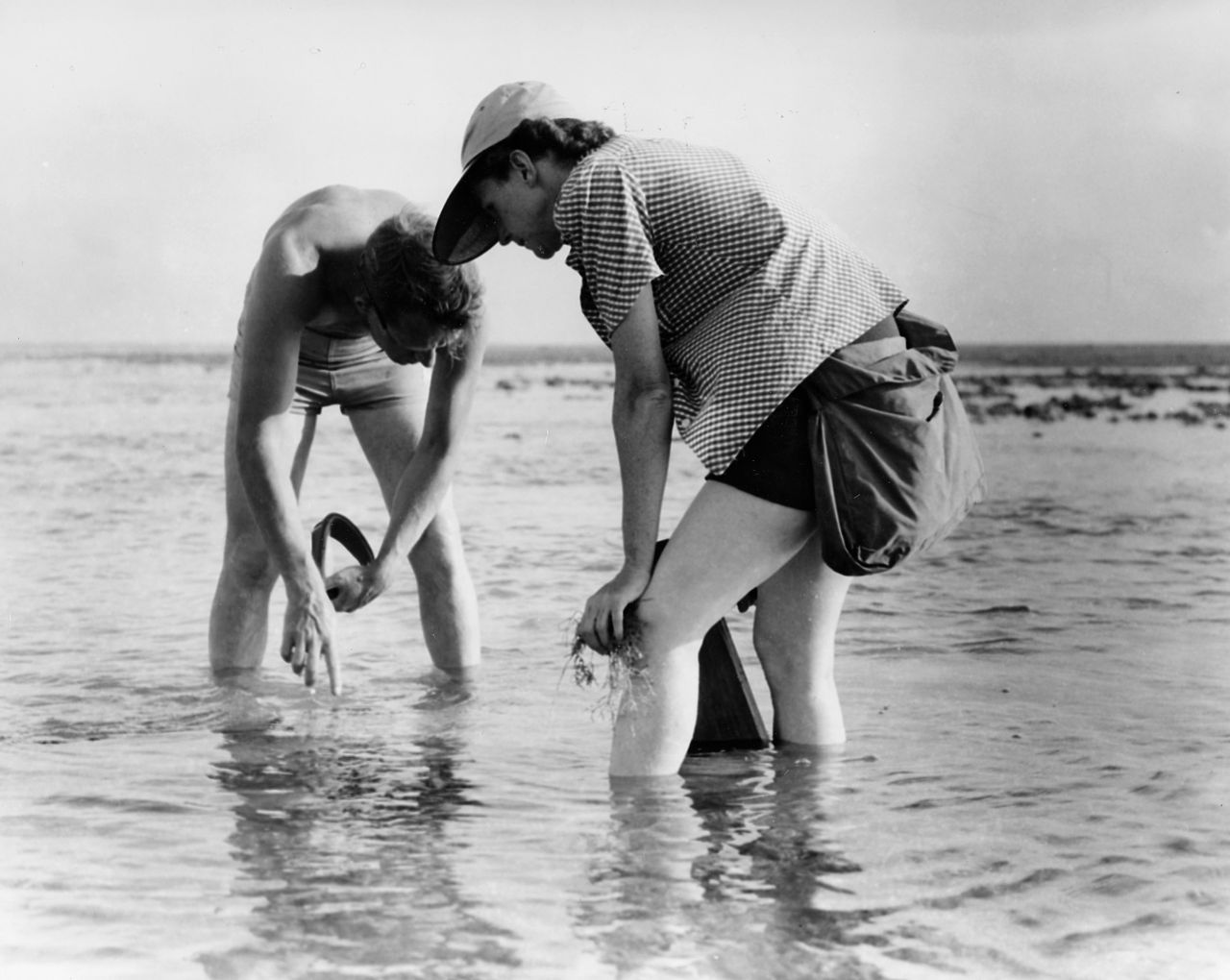
Rachel Carson conducts Marine Biology Research with Bob Hines — in the Atlantic (1952). By U.S. Fish and Wildlife Service
This copy bears a particularly interesting association, being inscribed to Dr. A D Pickett, a pioneer of alternatives to chemical pesticides who is mentioned in the acknowledgements of the book.
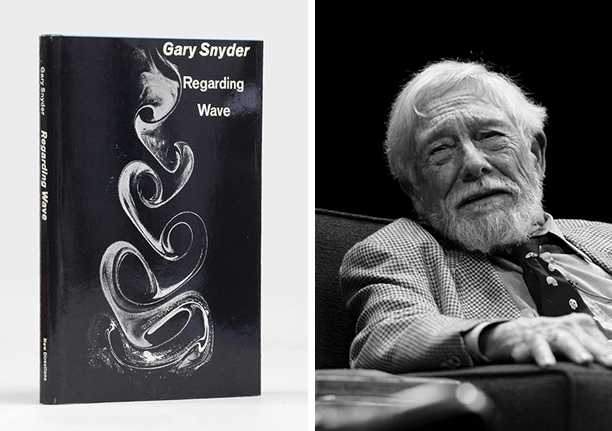
Gary Snyder.Photo by Festival of Faiths.
Gary Snyder, Regarding Wave. 1970
Snyder’s career has been long and varied; he was connected with the Beat poets, the San Francisco Renaissance, and was influenced by his practice of Zen Buddhism and study of Native American tribes. Growing up in the Pacific Northwest, Snyder was horrified by the mass deforestation he witnessed. Believing that language and culture shape the way humans relate to the natural world, he has written extensively on the environment and has been called the ‘poet laureate of Deep Ecology’. Deep Ecology differentiates itself from what it identifies as ‘shallow ecology’ – viewing nature in the context of its utility to human life – by investing the natural world with intrinsic value. In his poetry, Snyder has explored the natural world extensively, experimenting with new ways of employing language in order to place nature, not man, at the centre of his work. The critic Richard Wallace wrote that Snyder’s poems gave voice “to the ferocious energy of nonhuman beings”. Snyder’s 1990 collection of essays The Practice of the Wild is considered one of the most influential environmental works of the last 50 years.
Of himself, Snyder wrote:
As a poet I hold the most archaic values on earth. They go back to the late Paleolithic: the fertility of the soil, the magic of animals, the power-vision in solitude, the terrifying initiation and rebirth; the love and ecstasy of the dance, the common work of the tribe. I try to hold both history and wilderness in mind, that my poems may approach the true measure of things and stand against the unbalance and ignorance of our times.
Regarding Wave, Snyder’s 1970 poetry collection, was heralded as a new achievement in his project to explore the interconnectedness of all things, both human and non-human. It brings together religion, ecological thought and Snyder’s personal relationships, putting the “precarious balance among forces and species” at the thematic centre of the collection.
If you would like to make an enquiry about selling a book, please fill out the form which can be found here. We regret that we are unable to offer valuations.
